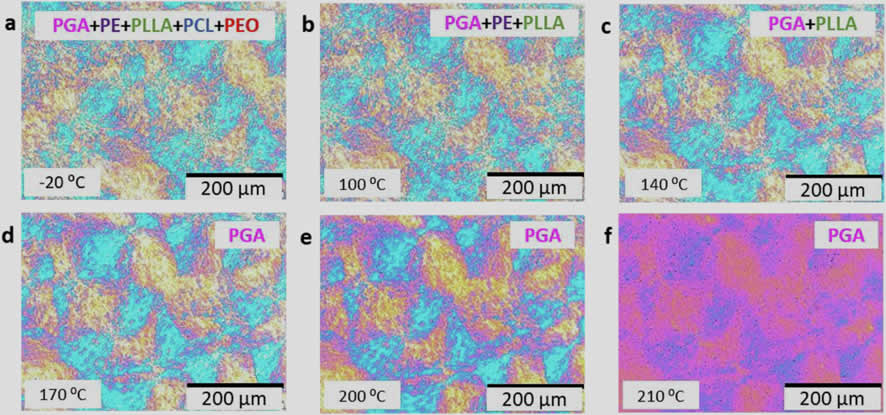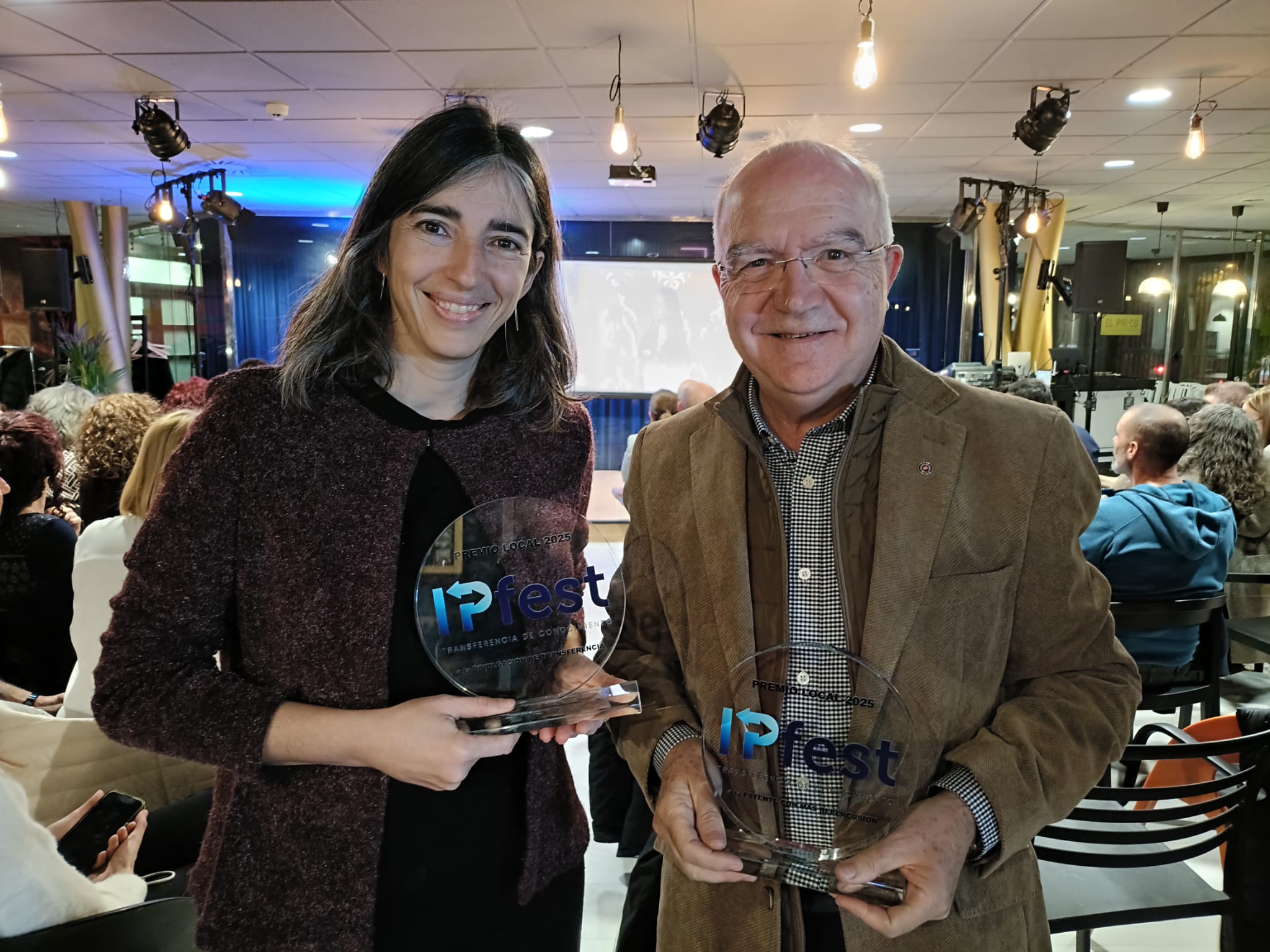INMA participates in a fundamental breakthrough in the design of new multifunctional materials for biomedical and high-tech applications
The team, led by researchers from the University of Zaragoza, Polymat-UPV/EHU, and KAUST in Saudi Arabia, has created a polymer structure unique in the world with five types of crystals
The finding has been published in the prestigious Nature Communications
Zaragoza, 20 November 2025. Zaragoza, 21 November 2025. An international team of scientists, including researchers from the Aragon Nanoscience and Materials Institute (INMA), a joint centre of the Spanish National Research Council (CSIC) and the University of Zaragoza, has achieved an unprecedented breakthrough in the field of materials: creating a polymer capable of organising itself into an internal structure with five different types of crystals. Nothing like this has ever been observed in a material of this type before: until now, the limit had been four.
The discovery, recently published in the prestigious journal Nature Communications, was led by researchers from the University of Zaragoza, Polymat–UPV/EHU and King Abdullah University of Science and Technology (KAUST) in Saudi Arabia.
In short, this work resolves how a pentablock quintopolymer organises itself hierarchically, crystallising in a strict sequence, which translates into a breakthrough that opens the door to the design of multifunctional materials for biomedical and high-tech applications. The five potentially crystallisable and biocompatible blocks are: polyethylene (PE), polyethylene oxide (PEO), polycaprolactone (PCL), polylactide (PLLA) and polyglycolide (PGA).
A material that “self-organises”
Polymers, explained in very simple terms, are very long chains made up of many small repeating pieces, like the beads in a necklace, each bead being a small molecule (for example, the plastic in a bottle is a polymer).
The focus of this research is a particularly complex polymer made up of five different blocks. When cooled, the material self-assembles in an orderly manner, generating spherical structures—called spherulites—where each of the five blocks forms a different type of crystal. In other words, five pieces of a molecular puzzle that fit together on their own in the exact right place.
To demonstrate this, the team used microscopy, X-ray and thermal analysis techniques in internationally renowned laboratories, such as the Advanced Microscopy Laboratory in Zaragoza and the ALBA Synchrotron, as well as techniques from research centres at the University of the Basque Country (UPV/EHU). In particular, the groups led by Professors Víctor Sebastián (professor at the University of Zaragoza at INMA), Alejandro J. Müller (Polymat–UPV/EHU) and Nikos Hadjichristidis (KAUST) stand out.
The group led by Nikos Hadjichristidis (KAUST) was responsible for the pioneering synthesis of the quintopolymer, to which researchers Pengfei Zhang and Viko Ladelta also contributed. The group led by Ikerbasque research professor Alejandro J. Müller (Polymat, UPV/EHU), an expert in polymer crystallisation, was responsible for the spectroscopic and calorimetric characterisation (researchers Eider Matxinandiarena and Ricardo A. Pérez-Camargo also contributed). Víctor Sebastián, professor of Chemical Engineering at the University of Zaragoza, researcher at INMA (CSIC-Unizar) and leading scientist at the Advanced Microscopy Laboratory (ICTS Elecmi), achieved the characterisation of the material by TEM microscopy through a prior chemical staining process that enabled the structural analysis of the material.
Thanks to these techniques, they were able to observe how the internal structure of the material changes with temperature and confirm the presence of the five types of crystals.
This discovery therefore opens up new possibilities in the design of materials with properties that are closely tailored to each application.
- Medicine and health: development of biodegradable devices, “scaffolds” for tissue regeneration or drug delivery systems.
- Advanced technology: creation of more resistant, adaptable materials or materials with combined functions.
- New sustainable polymers: capable of integrating biodegradable and biocompatible components.
It should be noted that Sebastián and Müller are currently collaborating on a European Poctefa project (AcroBioPlast) on the development of new biopolymers for use in biomedical devices and that this unprecedented advance in polymer self-assembly takes materials science to a new level of complexity and controlled functionality.

In this image taken from the publication, PLOM micrographs show how the same polymeric spherulite changes its internal structure when heated progressively from –20 °C to 210 °C. At each temperature, the crystals of the different semi-crystalline blocks melt, identified by synchronised synchrotron X-ray diffraction (WAXS) measurements. At –20 °C, pentacrystalline spherulites are observed, formed by five types of lamellar crystals that generate the characteristic Maltese cross pattern.
Severo Ochoa Centre of Excellence
The Aragon Nanoscience and Materials Institute (INMA-CSIC-UNIZAR) has been the first in our Autonomous Community to obtain the Severo Ochoa accreditation of excellence, awarded by the State Research Agency. This recognition entails funding of 4.5 million euros and the awarding of five pre-doctoral contracts for the period 2024-2028. These are in addition to the ten that were already awarded in the previous call for applications, when INMA came close to achieving accreditation.
INMA is a joint institute that was created three years ago by merging two research centres belonging to the CSIC and the University of Zaragoza, precisely with the aim of achieving this distinction of excellence. With around 300 members, it has more than 40 European projects underway and an annual average of 300 publications and €7 million obtained in competitive public programmes. In addition, it works in collaboration with industry, earning around €1 million per year from contracts and royalties.
Reference to the scientific publication “Can five chemically different lamellar crystals self-assemble in a single spherulite?”.
Matxinandiarena, E.; Pérez-Camargo, R. A.; Sebastián, V.; Zhang, P.; Ladelta, V.; Hadjichristidis, N.; Müller, A. J. Nature Communications, 2025, 16, 9873, 1–5 (November). DOI: 10.1038/s41467-025-64845-6.
21-11-2025









